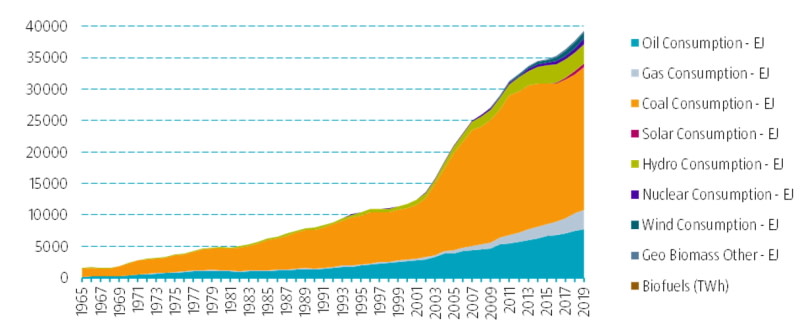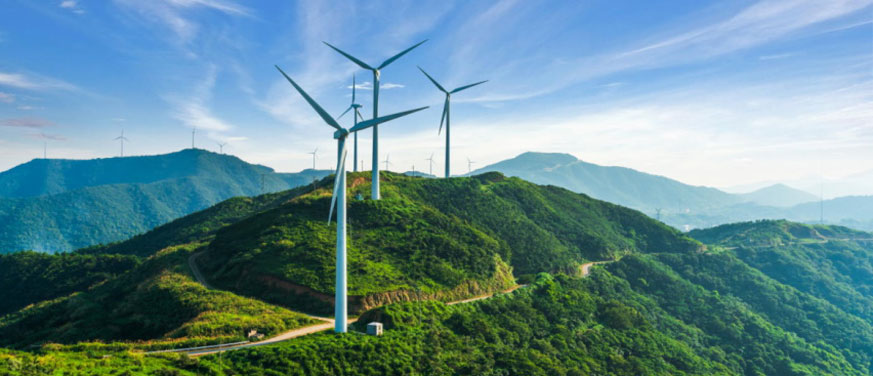Speed read
- Emerging markets are also gradually joining the net-zero race
- The energy transition is doable but will require colossal investments
- Some emerging countries need to reconsider their economic model
To achieve the global energy transition goal, emerging markets will play a crucial role, given their ever-growing importance globally. Countries such as China and India are still in the phase of economic expansion and thus still heavily reliant on fossil fuel to power their economies. As net importers of oil, they are keen on renewable energy, and want to go from relying on energy imports to becoming exporters of green energy components.
However, the energy transition will require significant economic restructuring and more effective policy changes in countries that are heavily reliant on oil and gas. Businesses that are part of the global supply chain now have stronger motivation than ever to decarbonize by adopting renewable energies. This is having real impact on the power sector across many markets.
Greening China and India’s energy sectors
China and India are largest energy users in the world, and therefore the most important markets in determining the success of the global decarbonization push. Compared to many developed markets, where electricity demand already peaked around 2007, these emerging markets will take longer to reach carbon neutrality.
Figure 1: China energy consumption by source

Source: BP Statistical Review of World Energy, June 2021.
In 2020, China pledged to cap its carbon emissions before 2030, and achieve carbon neutrality by 2060. More recently, India announced its commitment to net-zero by 2070 at the UN Climate Change Conference (COP 26) in Glasgow. The country had previously pledged to reduce its emissions intensity by over 30% by 2030.
Considering coal still makes up between 60% and 70% of the primary energy consumption today, in both countries, combining economic growth and lower emissions will require significant investments in renewable energies, such as solar, wind, and other low-carbon technologies.
On that front, China is already leading the world in renewables. It has managed to increase the share of non-fossil fuels in its primary energy consumption from just 6.8% in 2015 to 15% in 2020. The country now targets to grow that percentage further to 25% by 2030.
The low-carbon transition is also financially feasible. The levelized cost of energy (LCOE) of both wind and solar energy has fallen sharply over the last decade. These energy sources are already cheaper than new coal or gas-fired power plants in most countries. Moreover, some new wind and solar power generation built in India and China is already cheaper than existing coal fired power plants.
Greening oil exporter’s economy
The energy transition will also require significant economic restructuring from those countries that rely upon oil and gas for a significant part of their economy, such as Russia and the Gulf Corporation Countries (GCC). Saudi Arabia and Russia are the two biggest oil and gas producing countries within the emerging markets universe, each representing 12% to 13% of global oil production.
Figure 2: Oil and gas production as percentage of GDP per country

Source: BP, National Data Sources, EIA, OPEC, Morgan Stanley Research. Note: in order to compute the dollar value of the oil production, the average of Brent and WTI price series is used. For natural gas, Henry Hub LA price series is used.
A decline in oil and gas volumes as the global economy decarbonizes will pose significant challenges to their economies in the long run. The recent Global Roadmap to Net Zero by 2050 report by the International Energy Agency (IEA) shows the world’s demand for oil will need to decline from more than 90 million barrels a day to less than 25 million barrels per day by 2050.
Countries such as Saudi Arabia, Qatar and the United Arab Emirates (UAE) have set out agendas and drafted social and economic restructuring plans to diversify their economy to reduce their reliance on oil and gas. In terms of adding renewables to the grid, the UAE have been the most aggressive. Solar power generation capacity is expected to increase fourfold from 2.1 gigawatts currently to 8.5 gigawatts by 2025.
This will represent around 94% of the country’s renewables capacity. By 2050, 44% of electricity is targeted to be generated from renewables. Most of the solar projects are funded by state-owned enterprises (SOEs) at a cost generally close to the sovereign interest rate. Land and grid connections are offered for free to energy companies, which further enhances the rationale for renewables.
Meanwhile, Saudi Arabia has become more accepting of the energy transition needed, but funding is likely to be a constraint. Its National Transformation Program 2020 and Vision 2030 aims to grow the government’s non-oil revenue sixfold, and increase the share of natural gas and renewables to 50% of the total energy mix by 2030. These ambitious targets will require massive investments and it remains to be seen whether Saudi Arabia will be able to execute its plans.
Greening global supply chains
The importance of emerging markets in the global supply chain has grown significantly over the past two decades. Companies in the more developed economies have historically focused on emissions related to their own operations. However, driven by tougher regulations on carbon disclosure, including scope 3 emissions, more companies have started to look into their supply chain.
Read the full article here




